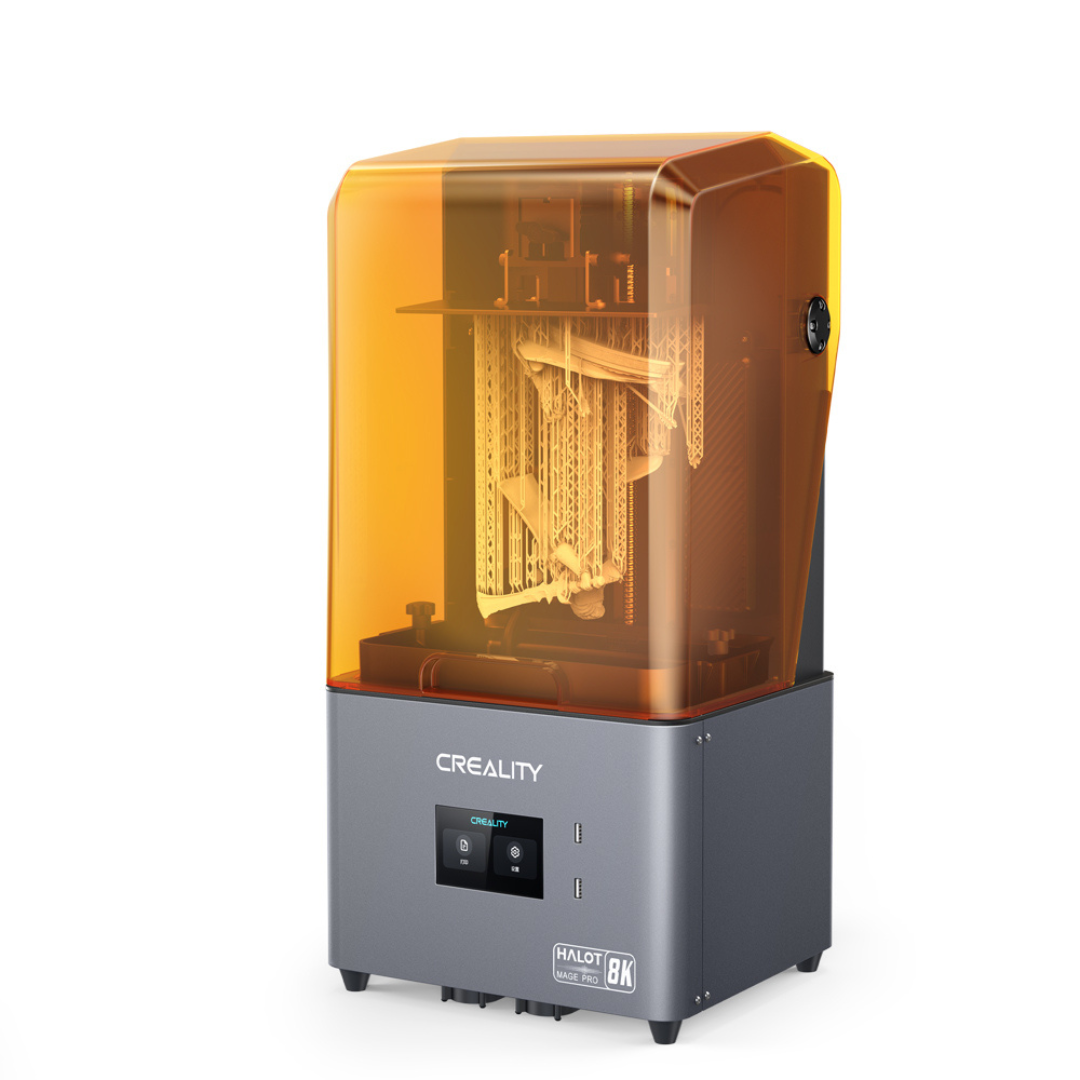Compare Halot Mage PRO vs Comgrow T300
Comparison between the best 3D printers
Choose the best 3D printer at the best price. The cheapest 3D printers are here.
Buy a 3D printer here with 3D Fila.
 |
 |
|
| Model | Halot Mage PRO |
Comgrow T300 |
| Printing Material | Resin | Filament |
| Buy Resin for Creality 3D Halot Mage PRO | Buy Filament forSovol Comgrow T300 | |
| Estimated price | $479,00 | $449,00 |
| Manufacturer | Creality 3D | Sovol |
| Release Year | 2023 | 2024 |
| Print Volume [mm] | 228x128x230 | 300x300x350 |
| Printer Size [mm] | 333x270x608 | 503x631x831 |
| Weight [kg] | 13,3 | 17 |
| Power Loss Recovery | NO | YES |
| Maximum Resolution [mm] | 0,01 | 0,1 |
| Processor | 64 bit | |
| Display | Display touchscreen 4,3'' | Touchscreen 5'' |
| Power Supply | 150 W | 150 W |
| Connectivity | USB / Wi-Fi / Ethernet | USB, WiFi |
| Operating systems | Windows, Mac, Linux | Windows, Linux, Macbook |
| Date of registration in the system | 2023-12-18 | 2024-05-10 |
| Release date | 2023 | 2024 |
| Extra features | The Creality HALOT-MAGE PRO is an advanced resin 3D printer, distinguished by its high build quality and detailed prints. It uses SLA technology with an 8K LCD screen, providing refined prints in a 228x128x230mm area. It offers an impressive printing speed of up to 170mm/h. Its design includes an automatic resin management system and an integrated air purifier, making it easier to use and reducing odors. Although it requires post-print cleaning, its intuitive interface and connectivity options such as cloud and LAN make the HALOT-MAGE PRO a robust choice for professionals and enthusiasts. | The Sovol Comgrow T300 printer stands out for its technological innovations and advanced features. With a print size of 300mm300mm350mm, the T300 offers true linear rails on all axes, ensuring greater stability. Its Klipper-based intelligent core and 64-bit microcomputer increase printing speed and quality through pressure advancement and input shaping. The extruder with a gear ratio of 6.5:1 allows for more precise material control, optimizing the printing of flexible materials. In addition, the T300 features a rapid filament cooling system with a high-speed fan and a circular duct piece that improves cooling efficiency. With a 4.3-inch high-refresh rate touchscreen and an 81-point automatic leveling system, the T300 simplifies the preparation and execution of 3D prints. |
| Support for multiple colors and materials (AMS and CFS) | NO | NO |
Notes * |
||
| Cost-benefit | 8 / 10 | 7 / 10 |
| Hardware | 3.5 / 10 | 3.2 / 10 |
| Tela | . | . |
| Print volume | 3 / 10 | 4 / 10 |
| Performance | 9 / 10 | 5 / 10 |
Conclusion |
| In comparing the Creality 3D Halot Mage PRO and the Sovol Comgrow T300, both 3D printers exhibit strong features tailored for different user needs and preferences. The Halot Mage PRO, with its advanced SLA technology and high resolution, excels in producing intricate and detailed prints, making it an appealing choice for professionals in need of precision. Additionally, features such as automatic resin management and an integrated air purifier enhance usability and safety, albeit with the requirement of post-print cleaning. Conversely, the Comgrow T300 is designed for those seeking versatility and ease of use in larger print volumes. Its robust build featuring true linear rails and an aggressive cooling system supports a variety of materials and helps maintain print quality, particularly for flexible filaments. The T300's focus on user-friendly technology, including its intuitive leveling system and responsive touchscreen, positions it well for novice and experienced users alike. While the Halot Mage PRO is slightly more expensive, it justifies the price with its advanced printing capabilities and user-friendly features for resin printing. The Comgrow T300, at a lower price point, delivers excellent functionality for filament printing, particularly with its larger build volume and innovative cooling solutions. Ultimately, the decision hinges on your specific printing needs: if high-detail resin prints are your priority, the Halot Mage PRO would be the superior choice. In contrast, if you value a larger print size and the flexibility to work with various materials, the Comgrow T300 would be a more suitable option. Both printers achieve a commendable cost-benefit ratio, making them attractive choices in the competitive 3D printing market. |

